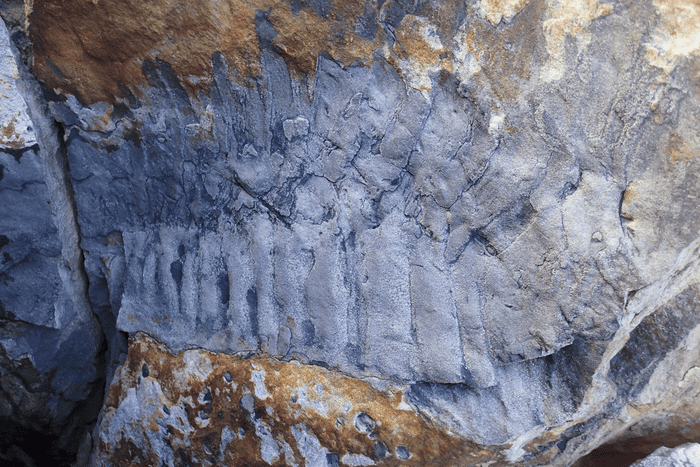
After a section of a cliff next to a beach in northern England fell onto the shore, it exposed the fossils of one of the biggest, baddest, creepy crawlers the Earth has ever seen. Paleontologists believe the fossils belong to a giant millipede whose many segmented legs could extend to as much as 2.6 meters in length, about the size of a sedan. The fossils were dated to the Carboniferous period, more than 100 million years before the first dinosaurs emerged.
When this peculiar creature, known as Arthropleura, was still alive, the land we now know as England actually lay near the equator. Instead of the dreary weather, Arthropleura basked in the tropical sun and munched on the abundant plants, although it likely supplemented its diet by hunting other smaller invertebrates and maybe even vertebrates like amphibians along creeks and rivers. With plenty of food, the giant millipede easily grew to gargantuan size, weighing up to 50 kilograms.
Each of its segmented legs measured 75 centimeters (2.5 feet) in length. In fact, these were the most preserved parts of the fossil, a rare find in itself since the bodies of giant millipedes disarticulate once they died. For this reason, Neil Davies, a paleontologist at the University of Cambridge and lead author of the study, believes the fossils retrieved from the British beach are actually a molted carapace that the animal shed as it grew and was later filled with sand. The implication is that Arthropleura may have grown even larger.
This is only the third giant millipede fossil that scientists have found thus far. The two other known Arthropleura fossils were found in Germany, and both were much smaller than the new specimen. But no fossilized head has ever been found, which makes it challenging to imagine what these crawling arthropods really looked and behaved like. Considering how rare and fortuitous this discovery happened to be though, we can’t ask for too much.

“It was a complete fluke of a discovery,” said Dr. Davies in a statement. “The way the boulder had fallen, it had cracked open and perfectly exposed the fossil, which one of our former Ph.D. students happened to spot when walking by.”
Scientists used to think Arthropleura grew to such large sizes thanks to more oxygen present in the atmosphere during the late Carboniferous and Permian periods, but the fossils come from rocks deposited before the very peak. Oxygen cannot solely explain Arthropleura‘s hefty frame. Instead, the researchers believe the millipede must have had access to a nutrient-rich diet.
“While we can’t know for sure what they ate, there were plenty of nutritious nuts and seeds available in the leaf litter at the time, and they may even have been predators that fed off other invertebrates and even small vertebrates such as amphibians,” said Davies.
Arthropleura spent at least another 45 million years crawling around the equator until it finally went extinct during the Permian. It could have been climate change that dried up the environment too fast for them to adapt. Alternatively, the rise of reptiles may have outcompeted them. Out goes giant millipedes, in comes dinosaurs.
If you’re close to Cambridge’s Sedgwick Museum after the new year, you can see the fossils on display with your own eyes.
The findings appeared in the Journal of the Geological Society.









